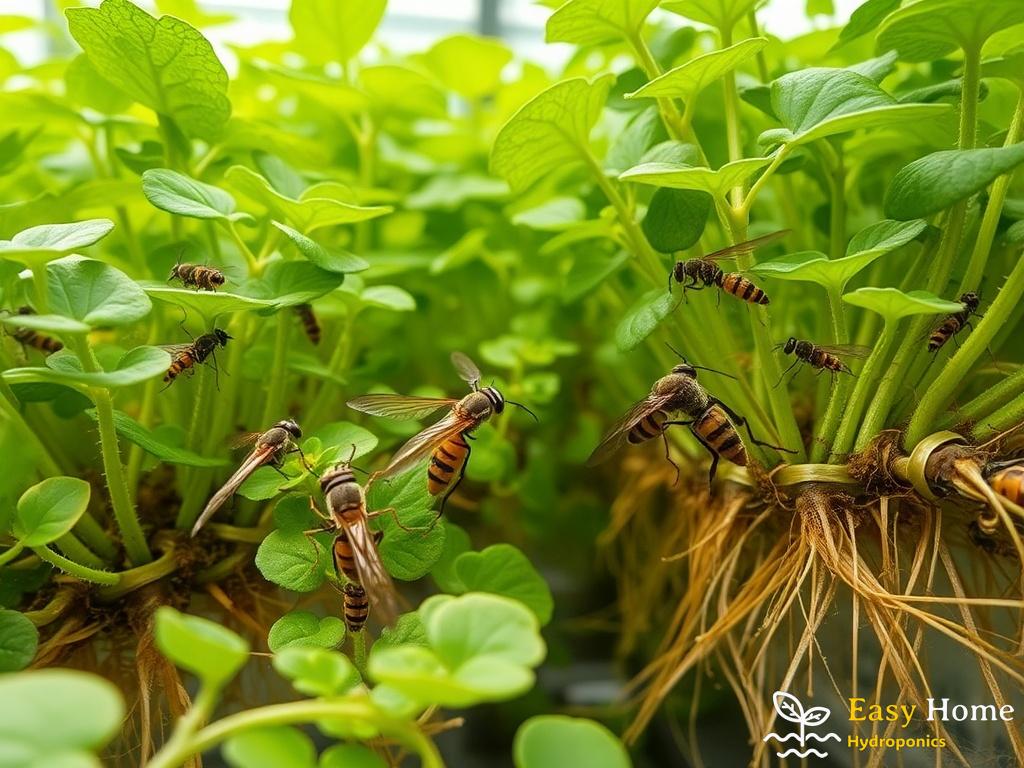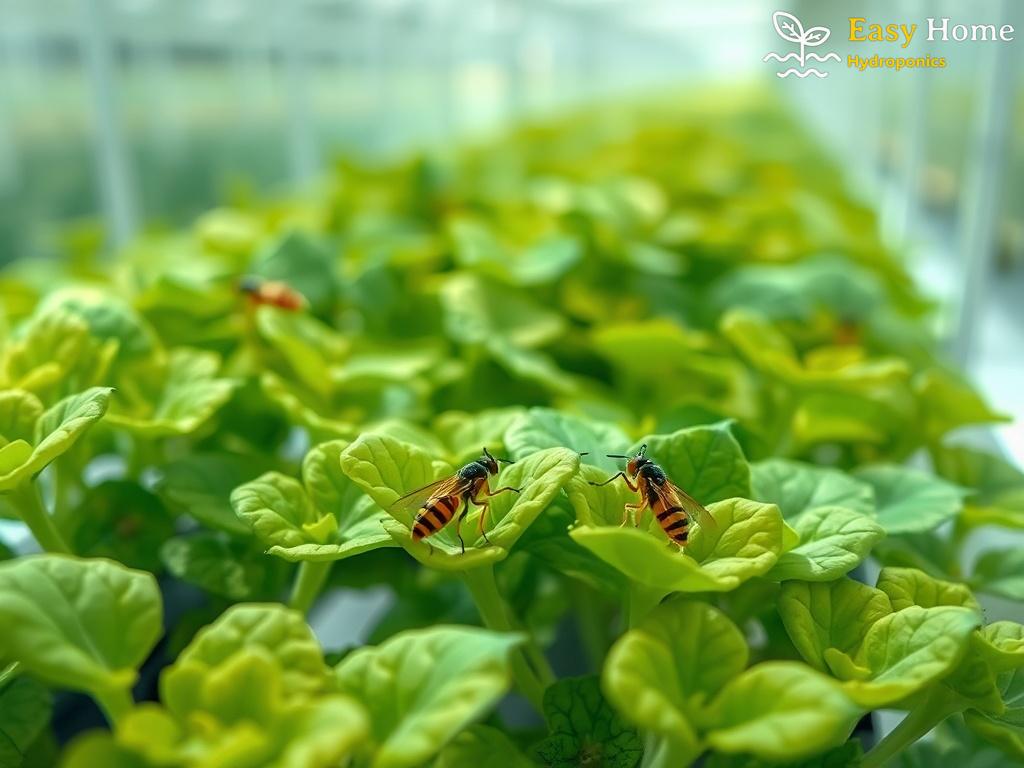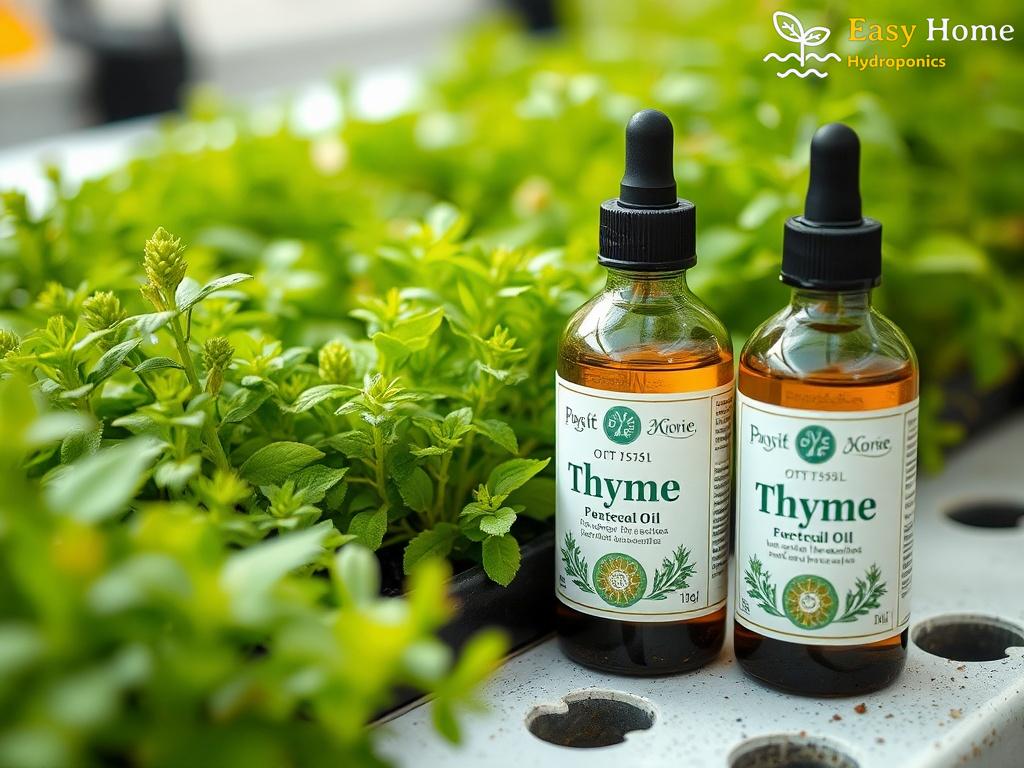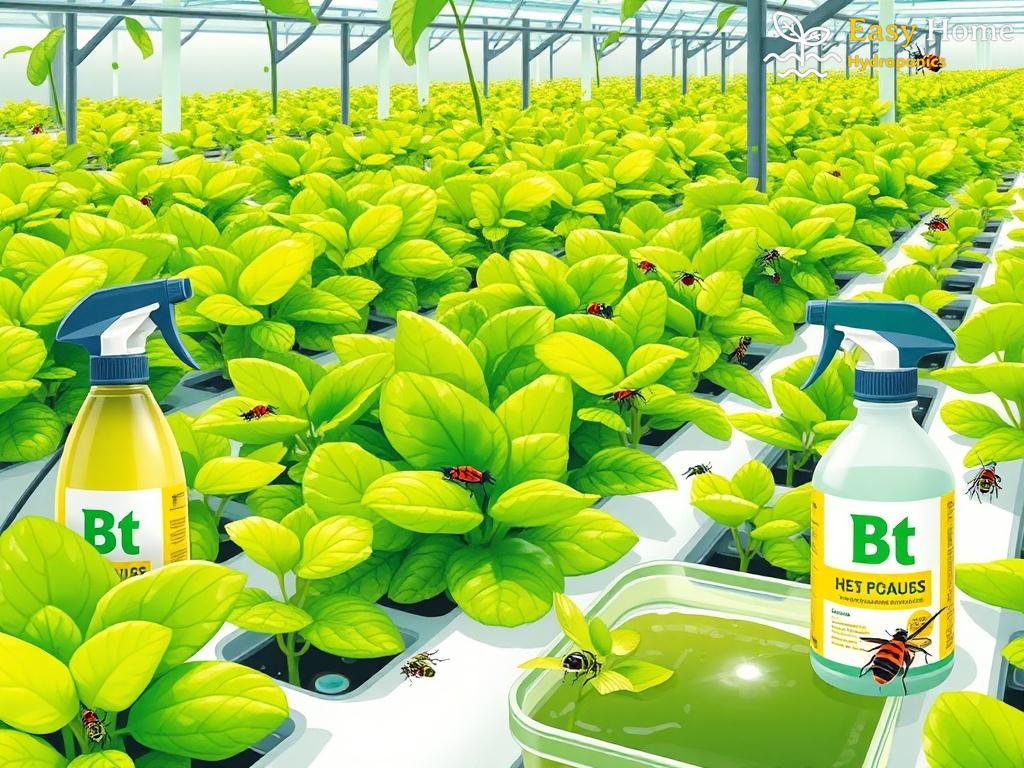The Role of Parasitic Wasps in Hydroponic Ecosystems

When one thinks of pest control in hydroponic systems, images of chemical sprays and manual removal often come to mind. However, a silent hero emerges in this battle: parasitic wasps. These tiny yet formidable creatures play a pivotal role in maintaining ecological balance and ensuring the health of hydroponic crops. Their unique life cycle and behavior make them essential allies for growers aiming for sustainable pest management.
Parasitic wasps are nature’s architects of biological control. They target pests like whiteflies, laying their eggs inside or on the bodies of these harmful insects. As the wasp larvae develop, they consume their host from the inside out, effectively reducing whitefly populations without the need for harmful chemicals. This process not only protects the plants but also promotes a healthier growing environment.
Utilizing parasitic wasps in hydroponic systems offers numerous advantages. Below is a list highlighting some key benefits:
- Eco-Friendly Solution: Reduces reliance on chemical pesticides, promoting a sustainable approach to agriculture.
- Targeted Control: Parasitic wasps specifically target pests like whiteflies, minimizing impact on beneficial insects.
- Cost-Effective: Once established, these wasps can provide ongoing pest control, reducing long-term costs associated with pest management.
- Improved Crop Health: By managing pest populations effectively, parasitic wasps contribute to healthier plants and higher yields.
In the quest for effective whitefly management in hydroponic systems, parasitic wasps represent a promising avenue. Their natural predation provides not only a solution to pest issues but also enhances the sustainability of agricultural practices. As growers become more aware of these eco-friendly alternatives, the future of hydroponics looks brighter, greener, and more balanced.
Identifying Effective Wasps for Whitefly Control
As hydroponic systems continue to rise in popularity, the need for effective pest management strategies becomes increasingly critical. Among the various biological control agents, parasitic wasps emerge as a preferred option due to their targeted approach and minimal environmental impact. However, not all parasitic wasps are created equal; selecting the right species is crucial for effective whitefly control. Let’s explore the fascinating world of these tiny warriors and learn how to identify the most effective wasps for managing whitefly populations.
When choosing parasitic wasps for whitefly management, several characteristics make certain species stand out. Growers should look for wasps that not only exhibit a high level of efficacy against whiteflies but also adapt well to the hydroponic environment. Here are some key traits to consider:
- Host Specificity: Effective parasitic wasps should specifically target whiteflies while minimizing harm to beneficial insects.
- Life Cycle Duration: Shorter life cycles allow for faster population growth, leading to quicker pest control.
- Environmental Tolerance: The ability to thrive in hydroponic systems, including tolerance to humidity and temperature fluctuations, is essential.
- Successful Reproduction: High reproductive rates ensure that the wasp population can sustain the pressure from whitefly infestations.
To aid growers in their selection process, we have compiled a comparison of some of the most effective parasitic wasp species known for whitefly control. This table highlights their specific attributes, making it easier to identify the right match for your hydroponic needs:
| Wasp Species | Host Target | Life Cycle Duration | Reproductive Rate |
|---|---|---|---|
| Aphidius colemani | Greenhouse Whitefly | 10-14 Days | ~100 Eggs/Female |
| Encarsia formosa | Glasshouse Whitefly | 14-20 Days | ~50 Eggs/Female |
| Eretmocerus eremicus | Sweet Potato Whitefly | 10-16 Days | ~75 Eggs/Female |
Identifying the right parasitic wasps is just the first step; successful integration into hydroponic systems requires strategic planning. Growers should consider implementing a release schedule based on the life cycles of the chosen wasps, ensuring a continuous presence in the growing environment. Additionally, monitoring whitefly populations regularly will help assess the effectiveness of these natural allies and allow for timely adjustments in management tactics.
Integrating Biological Control into Hydroponic Practices
As the hydroponic industry continues to evolve, growers are increasingly seeking innovative methods to enhance crop health and productivity. One of the most promising avenues lies in the integration of biological control, specifically through the utilization of parasitic wasps. These minuscule warriors not only combat whitefly infestations but also align perfectly with the principles of sustainable agriculture. The incorporation of parasitic wasps into hydroponic practices can revolutionize pest management strategies, allowing for a more harmonious growing environment.
Establishing a Foundation for Biological Control
To successfully integrate parasitic wasps into hydroponic systems, it is crucial to establish a solid foundation. This begins with understanding the specific pests that are prevalent within your setup. Identifying the species of whiteflies causing damage is paramount, as different parasitic wasps target different hosts. Once the pest profile is established, growers can select the appropriate wasp species known for their efficacy against the identified whitefly variant. Such informed decisions lay the groundwork for effective biological control and contribute to long-term pest management success.
Creating an Optimal Environment
Integrating parasitic wasps requires more than just releasing these beneficial insects into the hydroponic system. It is essential to create an environment that supports their survival and reproductive success. This includes maintaining appropriate humidity and temperature levels, as well as providing alternative food sources when necessary. Additionally, careful monitoring of the hydroponic ecosystem will help ensure that the wasps can thrive and effectively manage whitefly populations. Through these practices, growers can cultivate a self-sustaining system where biological control becomes an integral part of the pest management strategy.
Monitoring and Adjusting for Success
Once parasitic wasps are released into the hydroponic environment, ongoing monitoring becomes vital. Regular assessments of whitefly populations will help gauge the effectiveness of the wasps and identify any necessary adjustments in management approaches. By developing a keen understanding of the interactions between the wasps, whiteflies, and the hydroponic crops, growers can refine their strategies to ensure optimal outcomes. This dynamic approach not only enhances pest control but also promotes a more resilient growing system, ultimately leading to healthier plants and increased yields.
Monitoring and Evaluating Wasp Impact on Whitefly Populations
In the ever-evolving world of hydroponics, monitoring the performance of parasitic wasps is not merely a choice; it is a necessity. As these tiny allies engage in their relentless battle against whiteflies, understanding their impact on pest populations is crucial for growers striving for optimal crop health. Regular assessments can unveil not only the efficiency of the wasps but also the overall dynamics of the pest ecosystem. By utilizing various monitoring techniques, such as sticky traps or visual inspections, growers can gather valuable data on whitefly populations, providing a clearer picture of the ongoing biocontrol efforts.
Evaluating the effects of parasitic wasps on whitefly populations involves a multifaceted approach. It begins with establishing baseline data about whitefly numbers prior to the introduction of wasps, allowing for a clearer comparison as time progresses. As the wasps establish themselves, growers should pay attention to specific indicators of success, such as a noticeable decline in whitefly populations or an increase in the number of parasitic wasp larvae present in their hosts. Furthermore, documenting changes in plant health and yield can also serve as a testament to the efficacy of the wasps, showcasing the broader benefits of biological control.
Another aspect of evaluation includes assessing the longevity and reproductive success of the wasp population. Observing how quickly the wasps reproduce and their ability to adapt to the hydroponic environment can offer insights into their sustainability as pest control agents. By keeping track of these metrics, growers can fine-tune their strategies, ensuring that these natural predators remain an effective component of their integrated pest management systems.
In essence, monitoring and evaluating the impact of parasitic wasps not only highlights their role as effective pest controllers but also emphasizes the importance of adapting practices to enhance their success. As growers embrace these insights, they pave the way for a more resilient and productive hydroponic ecosystem.
Challenges and Solutions in Implementing Wasp-Based Management
While the integration of parasitic wasps into hydroponic systems presents a promising avenue for pest management, several challenges can impede their successful implementation. Growers must navigate these hurdles with foresight and strategy to fully harness the potential of these natural allies. From environmental factors to biological compatibility, identifying and addressing these challenges is crucial for ensuring effective whitefly control.
One of the primary challenges in utilizing parasitic wasps is ensuring that they can thrive within the controlled environment of a hydroponic system. Factors such as humidity, temperature fluctuations, and the presence of competing species can significantly impact the success of wasp populations. However, with a proactive approach, many of these challenges can be mitigated. Below is a list of common issues and suggested solutions:
- Environmental Sensitivity: Maintain optimal humidity and temperature levels to create a conducive environment for wasps. Utilize climate control systems to regulate these factors effectively.
- Host Availability: In cases where whitefly populations are low, ensure that alternative hosts or food sources are available for the wasps to sustain themselves.
- Chemical Interference: Avoid using chemical pesticides that may harm the wasps. Educate growers about organic pest management practices to minimize chemical reliance.
- Biological Competition: Monitor and manage the presence of other beneficial insects to ensure parasitic wasps can establish a foothold without competition.
To enhance the effectiveness of wasp-based pest management, growers should consider developing a comprehensive strategy incorporating regular monitoring and adaptive management practices. This includes observing wasp behavior and whitefly populations to track progress and make necessary adjustments. By fostering an environment that supports the establishment and proliferation of parasitic wasps, hydroponic growers can create a more resilient ecosystem, ultimately leading to healthier crops and sustainable production.




